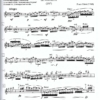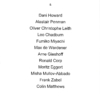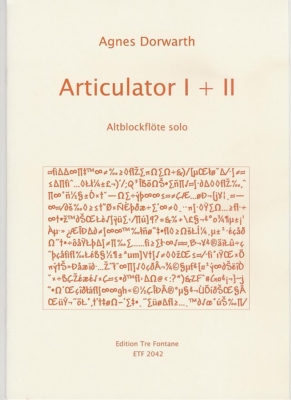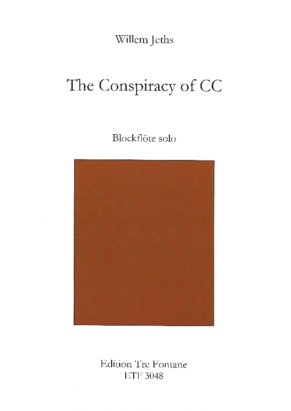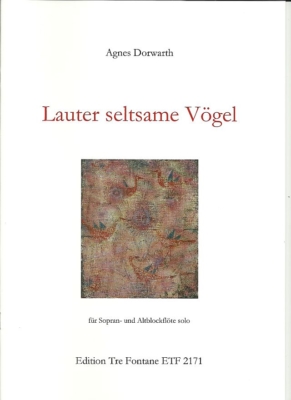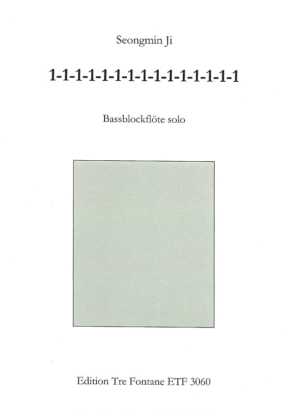Beschreibung
Werke von: Dani Howard (*1993), Alastair Penman (*1988), Oliver C. Leith (*1990), Leo Chadburn (*1978), Fumiko Miyachi (*1979), Max de Wardener (*1972), Arne Gieshoff (*1988), Ronald Corp (*1951), Moritz Eggert (*1965), Misha Mullov-Abbado (*1991), Frank Zabel (*1968) und Colin Matthews (*1946)
Bereits zu seinen Lebzeiten war Georg Philipp Telemann (1681-1767) nicht nur hoch geschätzt von seinen Kollegen, sondern auch bekannt als ein Mensch mit unzähligen Fähigkeiten, von überaus großer Schaffenskraft bis zu einem untrüglichen Gespür für gute Musik – und gute Geschäfte. Immer bereit, sich dem modernen Zeitgeist und Geschmack seines Publikums zu stellen, aber auch, sich durch Strömungen anderer europäischer Länder anregen zu lassen, gab er selber dem Musikleben entscheidende Impulse und suchte in seinem kompositorischen Schaffen stets nach neuen Ausdrucksmöglichkeiten. Seine Werke zeigen so das ganze Spektrum europäischer Musikstile – vereint zum sogenannten „goût réuni“, dem „Vermischten Geschmack“.
Besonders deutlich wird dies in Telemanns XII Fantasie per il Flauto senza Basso (c. 1733, Hamburg). Dort stehen sich deutscher Kontrapunkt, italienische Virtuosität und Sanglichkeit, französische und englische Tanzsätze sowie polnisch inspirierte Volksmusik gegenüber. Vielleicht ist es dies worauf sich Telemann mit dem Titel „Fantasie“ bezieht: Eine gewagte, innovative, fantastische Kombination von musikalischen Nationalstilen auf engstem Raum und für nur ein einziges Instrument, die Flöte. Die Idee, zu erkunden, welche Wirkung von diesen kompositorischen „Geniestreichen“ heute noch ausgehen kann, liegt nahe, ebenso wie die Ergänzung dieses Mosaiks durch Bausteine aus dem 21. Jahrhundert.
Anlässlich des 250. Todestages Telemanns im Jahr 2017 hat die Londoner City Mu-sic Foundation für mich zu jeder der XII Fantasie per il Flauto senza Basso eine Auftragskomposition vergeben. Jedes dieser zwölf neuen Stücke für Blockflöte solo baut dabei auf thematisches, harmonisches oder rhythmisches Material einer der Fantasien Telemanns auf, spinnt musikalische Ideen weiter, vertieft sie oder interpretiert sie neu.
Das Ziel dieses Projekts war es, die musikalische Bandbreite nicht nur für die Block-flöte zu erweitern, sondern Hörgewohnheiten aufzubrechen und einen neuen Zu-gang zu der nur scheinbar alten Musik Telemanns zu eröffnen – für die oder den SpielerIn oder ZuhörerIn.
Ich freue mich sehr, dass die Ergebnisse dieses Projektes nun erstmals als Kollektion von zwölf neuen Blockflöten-Soli gesammelt vorliegen und wünsche viel Spaß beim eigenen Erkunden und (Vor-)Spielen!
© Tabea Debus, London & Münster 2018
Even during his lifetime Georg Philipp Telemann (1681–1767) was not only held in high regard by his colleagues for his musical prowess, but was also known for his many skills away from composition. Most notable was his ability to compose pieces in rapid succession, producing one earworm after the other, and his sense for the business of music and in particular, publishing. Telemann was also re-nowned for being in tune with the modern zeitgeist, which enabled him to embrace the evolving musical tastes of his time and the preferences of his audience. His compositional output encompasses influences and musical fashions from many European counties, combining them into the so-called mixed style, the goût réuni.
This mix of styles is an especially prominent feature in his XII Fantasie per il Flauto senza Basso (c. 1733, Hamburg). These Fantasias for an unaccompanied flute jux-tapose German counterpoint with Italian virtuosity, and English and French dance movements with traditional Polish folk tunes. Perhaps this is what Telemann’s choice of title, ‘Fantasie’, refers to: a fanciful, imaginative, daring, and fantastic line-up of musical languages. This invites the idea of exploring the continuing relevance of these ingenious pieces by adding the 21st century to the mosaic of compositional styles.
On the occasion of Telemann’s 250th anniversary of death in 2017 the City Music Foundation, London, has commissioned twelve contemporary pieces for me, each based on one of the Fantasias. All of these freshly-penned pieces are reflections on thematic, harmonic or rhythmic material taken from the Fantasias – a (re) interpreta-tion of musical ideas, a reply to Telemann’s musical thoughts.
This project is a documentation of the ever-expanding repertoire for solo recorder. By showcasing so-far unheard of ways of listening to (and playing) seemingly ‘old’ mu-sic, it strives to demonstrate the continuous relevance of Telemann’s music in gen-eral and his twelve Fantasias for solo flute in particular.
I am delighted to share the fruits of the project in this first complete edition of all twelve new recorder soli and hope you will enjoy exploring, playing and perform-ing them as much as I do!
© Tabea Debus, London & Münster 2018


